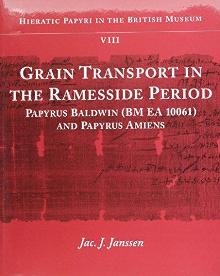| Main » Ad Board » ДРЕВЕН ЕГИПЕТ И АФРИКА » Икономика, стопанство и търговия |
Jacobus J. Janssen - Grain Transport in the Ramesside Period
| 30.10.2019, 06:46 | |
Издание на папирус от времето на Рамесидите - XX династия (ok. 1189-1077 г. пр.н.е.), касаещ транспортирането на зърно за храма на Амон в Тива с 21 товарни кораба. Включва факсимилно издание, йероглифна транслитерация и превод. Папирусът е открит през 80-те години на XX век в Асиут и е разделен на две части: едната (Папирусът Болдуин - BM ЕА 10061) се съхранява в Британския музей, а другата (МР 88.3.5.) в музея на Амиен, Франция. - на древноегипетски език (йератическо писми и йероглифи) и английски език, от Google Docs,формат PDF. Сваляне с ляв бутон (downloading by left button) от страницата на предоставящия сървър, после през бутона стрелка надолу/after by down arrow button.
| |
| Views: 1353 | Placed till: 30.11.2019 | Rating: 0.0/0 | |

